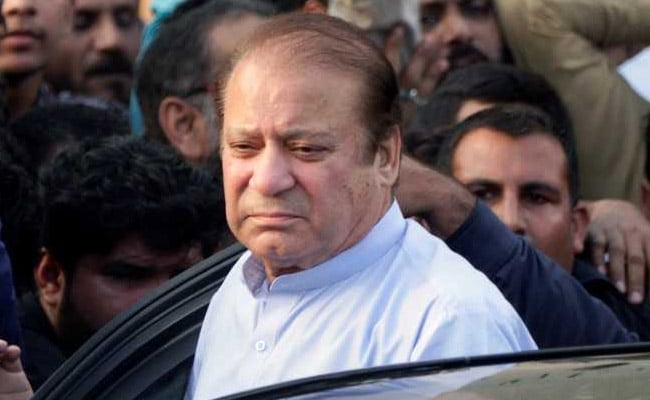
The Israel-Gaza war has been ongoing since October 7
United Nations Secretary-General António Guterres called for a ceasefire on Saturday during a visit to Gaza’s gates to allow for more aid, saying the world had “seen enough” of the horrors in Israel’s war with Hamas.
Hamas officials reported 19 deaths at an aid distribution point on the outskirts of Gaza City as Israeli forces carried out a multi-day raid on the region’s largest hospital.
Hamas authorities in Gaza said Israeli “tank fire and shells” killed at least 19 people and injured dozens more as they awaited urgently needed supplies.
Israeli forces deny firing into the crowd. “Preliminary investigations have determined that the convoy was not hit by airstrikes, and there were no incidents of (Israeli) troops shooting at people inside the aid convoy,” the statement said.
In a similar scene earlier this month, the health ministry said fires in Israel had killed 20 people seeking aid at the same site, but the military blamed “armed Palestinians” for firing into the crowd.
Hamas’s attack on southern Israel on October 7 triggered nearly six months of fighting, leaving the humanitarian situation in the besieged area extremely dire.
“Palestinians in Gaza, children, women and men, remain trapped in a never-ending nightmare,” Guterres said on the Egyptian side of the Rafah crossing, the main aid entry point with Gaza.
Most of the territory’s 2.4 million people have sought refuge on the Gaza side of Rafah, and Israel has vowed to send ground troops to fight Hamas.
“I speak for the vast majority of people in the world who have seen enough,” Guterres said, deploring “communities being destroyed, homes being demolished, entire families and generations wiped out.”
hospital raid
He said there was “no justification” for the Oct. 7 attack or for “collective punishment” of Palestinians and demanded that Israel commit to “full and unrestricted delivery of humanitarian supplies throughout the Gaza Strip.”
Guterres said it was “moral outrage” to see “a long line of blocked aid trucks on one side of the gate and the long shadow of hunger on the other.”
Foreign Minister Israel Katz responded on social media platform
On the sixth day of Israel’s operation in and around Gaza City’s Shifa hospital, Maj. Gen. Yaron Finkelman, commander of the army’s Southern Command, vowed to continue operations until “the last terrorist falls into our hands, whether Death is life.”
Mohammed, a 59-year-old Gaza City resident who lives not far from Shifa, told AFP he saw “many bodies” in the streets, buildings on fire and tanks blocking roads.
“I think Gaza has become worse than hellfire,” he said, giving only his first name.
The military said more than 170 militants had been killed in and around the hospital, which was attacked by Israeli forces in November.
The military said the current operation had avoided harm to civilians or medical personnel, but the United Nations Office for the Coordination of Humanitarian Affairs said “health workers were reportedly among those arrested and detained.”
The Israeli government is facing growing international pressure to ease its bombing and ground offensive, which Gaza’s health ministry says has killed at least 32,142 people, mostly women and children.
Unprecedented attacks by Hamas in October killed about 1,160 people in Israel, mostly civilians, according to an AFP tally of official Israeli data.
Israel has vowed to eliminate the militants, and they have also held about 250 hostages. Israel believes that about 130 of them are still in Gaza, and 33 of them are suspected to be dead.
Efforts by Egyptian, Qatari and U.S. mediators to broker a ceasefire that would involve exchanging some of the remaining hostages for Palestinians in Israeli jails have made no progress.
A Hamas official with knowledge of the negotiations told AFP on Saturday that huge differences remained between the warring sides.
“There are serious differences in the negotiating positions between Hamas and the occupation forces, as the enemy sees the flexibility shown by the movement as a weakness,” the official said.
“Nothing to eat”
Despite warnings that Operation Rafah would cause mass civilian casualties, Israeli officials said the military would continue to threaten attacks on the city and deemed it necessary to eliminate Hamas.
“We will act alone if we need to” without U.S. support, Prime Minister Benjamin Netanyahu said after meeting Friday with Secretary of State Antony Blinken, who is visiting the region to push for a truce.
Much of the country is in ruins and the World Food Program says Gazans are already “starving to death” and famine is expected to emerge in northern Gaza by May without urgent intervention.
In Gaza City in the north, Beral Hersira said his nephew was among those killed at an aid distribution point as he waited to collect food for his two-month-old baby and other relatives.
“They had nothing to eat,” Hesira told AFP. “He went to the Kuwait roundabout to buy flour and food… He lost his life in vain.”
The United States, Israel’s staunchest ally, which provides billions of dollars in military aid to Israel, has become increasingly outspoken about the impact of the war on civilians.
Defense Secretary Yoav Galante will travel to Washington on Sunday to discuss the latest developments with Defense Secretary Lloyd Austin and other senior officials.
(Except for the headline, this story has not been edited by NDTV staff and is published from a syndicated feed.)






